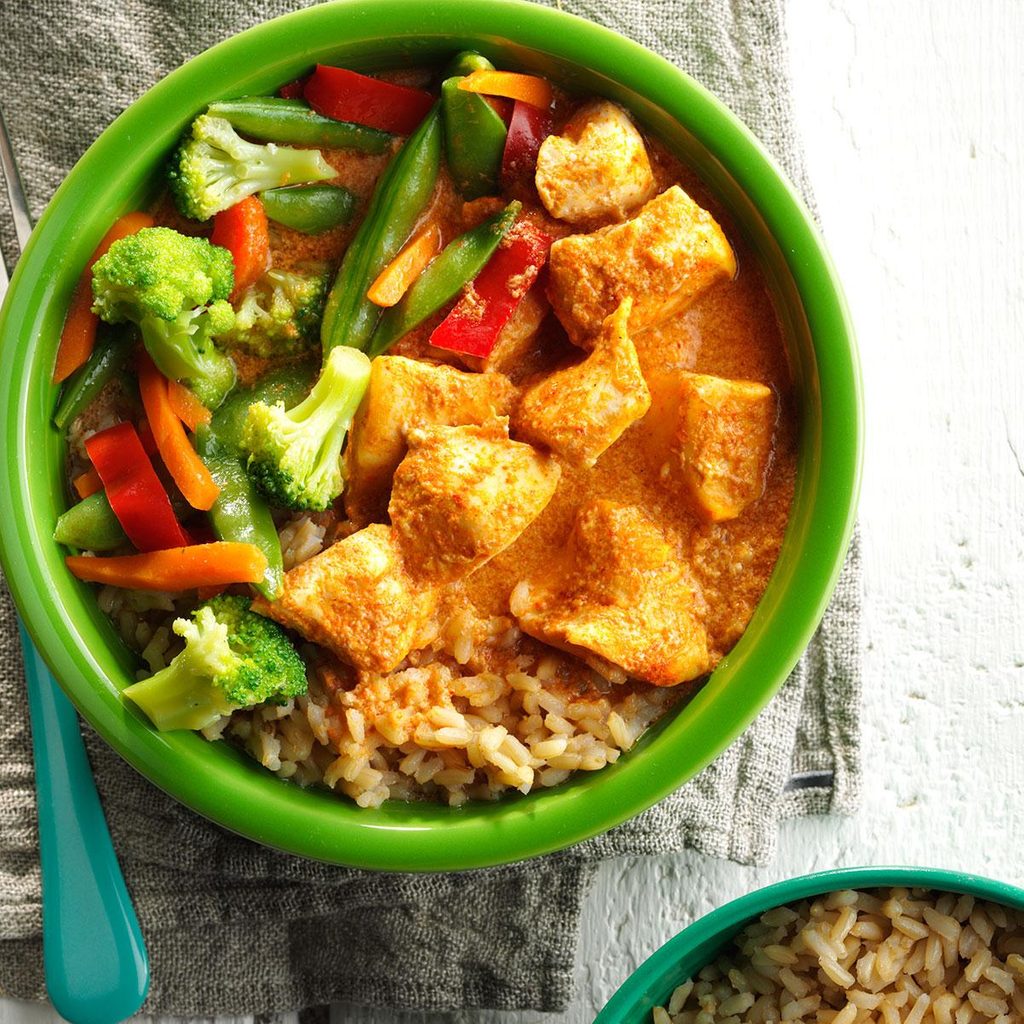Thai Red Curry Chicken and Vegetables Tips
How hot is a Thai red curry?
Thai red curry is a beautiful blend of sweet and spicy, but not overwhelming hot by any means, thanks to the creaminess of the coconut milk. It's made with a paste that consists of red chilies, ginger, lemongrass, garlic, shrimp paste and a variety of other spices. Most Thai
curries contain a lot of the same ingredients, but the chilies used in the pastes is what creates their distinct colors and spice level. Red is typically the hottest, green is milder, and yellow is right in between the two.
What's the difference between a Thai red curry and a Thai green curry?
Thai red curry is typically hotter than green and is the most versatile curry. Green curry, like the kind used in our
Garbanzo-Vegetable Green Curry recipe, usually contains more fresh ingredients like lime, cilantro and basil, making it a brighter flavor and the green chilies are typically milder.
Can I use curry powder instead of curry paste?
You can use curry powder instead of curry paste, but know they’ll each bring a totally different flavor to the dish. Curry paste will have more spice and overall flavor to it, especially depending on the flavor you have on hand (green, yellow, or red) and is a wet ingredient. Curry powder is much milder and is a dry blend.
Research contributed by Sarah Fischer, Taste of Home Culinary Assistant
Nutrition Facts
1 cup chicken curry with 3/4 cup rice and 3/4 cup vegetables: 511 calories, 14g fat (6g saturated fat), 94mg cholesterol, 606mg sodium, 51g carbohydrate (6g sugars, 5g fiber), 41g protein. Diabetic Exchanges: 5 lean meat, 3 starch, 1 vegetable, 1 fat.





















